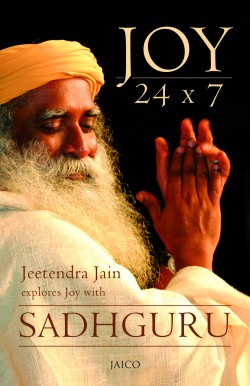
In many Asian countries, betel leaf holds a significant value in cultural events, rituals and ceremonies. It is often believed that its inherent properties attract positive energy and divine blessings. In some cultures, it is even offered to the elders in the family as a mark of hospitality and respect. In Hindu cultural events, the betel leaves are considered to be purifying and are offered to Gods and Goddesses.
They are also used in traditional medicine owing to their medicinal qualities. Betel leaves come with several curative health benefits as they are loaded with vitamins like Vitamin C, thiamine, niacin, riboflavin, and carotene, and they are a great source of calcium. Let’s hear Sadhguru speak more about how the leaf came to be so popular when he was asked the following question: “Sadhguru, this is from Sona who wants to know what is the significance of betel leaves when they’re offered to the gods?”
Sadhguru: “Oh, that means you didn’t eat it. You know people look at soot on the betel leaf and tell the future or read. So there is a culture where the lamp soot is collected on the betel leaf. Maybe many of you don’t know what a betel leaf is. In India it’s very important. It’s a very good digestive (aid). It is alkaline in nature. If you have consumed small quantities of poison in the food that you’ve eaten it neutralizes all that. Any acidic poisons are neutralized including cobra venom. It could neutralize that and to some extent, it’s not that it will completely prevent it but it brings down various aspects. So at the end of the meal people consume this vethala or viladalei.”
“Betel leaf and perception have been connected because it is a neurological stimulant, nervous stimulant rather. If you consume it your nerves will go mild like that. So your neurological complexity and neurological activity and your perception are directly related. Why a human being is able to perceive things a lot more than any other creature is because we have the most complex neurological system.”
“This leaf has the ability to absorb the highest amount of solar rays per square inch compared to any other leaf. That’s why it grows only in shade. It cannot take sunlight because it absorbs too much. So, because of this ability to absorb, particularly its stem is so sensitive that it becomes a source of perception and it is a pointer towards the North and if you consume it, it enhances your neurological system and in turn your perception.”
“And if it is being in touch with Devi or its stem is pointing towards Devi it also absorbs whatever is her quality, and then you want to put it into your system, that is the idea or people just put it on their body. Some people put it to their manipuraka or anahata or vishuddhi. Don’t do these things because that needs a certain preparation, but you can consume it, not every day, maybe once in a way if you want, you can consume it. Definitely you can see there’s a little up, it is a stimulant unlike coffee or tea. It is not aggressive like that but it works if you have a heavy meal and then eat a betel leaf then you will see it will not let you sleep but at the same time you don’t feel hyper activated. A gentle activation of the neurological system happens, so it’s been in use for a long time.”
“Betel leaf also has a tradition. You should never tear it vertically because the spine of the betel leaf is very important. You should not tear it vertically if you want to share it. The most important part of the leaf is the spine. So if you share it with somebody they must also get a piece of the spine. That’s a reason why betel leaf and Devi are very connected because both are for perception, both are for enhancing human perception.”




